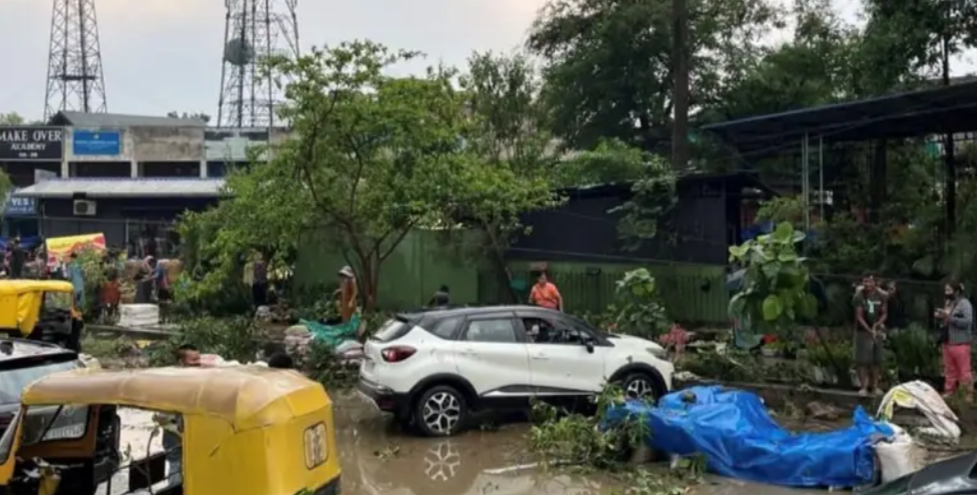A powerful storm, replete with strong winds, heavy rain, and hailstones, wreaked havoc in Dimapur, Nagaland on Wednesday afternoon. The sudden onslaught left the city reeling, with snapped power lines, damaged vehicles, and debris-strewn streets painting a picture of chaos and disruption.
The storm’s fury was felt across the district as gusty winds toppled tree branches onto two vehicles in Welford Colony and Supermarket area, causing substantial damage. Swift action by the administration saw teams deployed to clear the roads of fallen debris, working diligently to restore a semblance of normalcy to the affected areas. Miraculously, no casualties or injuries were reported in the storm’s immediate aftermath.
Also Read: Extortion by NPGs Strangle Nagaland’s Economy
Residents were caught off guard despite a warning issued earlier by the Nagaland State Disaster Management Authority (NSDMA), which cautioned about the likelihood of thunderstorms accompanied by lightning and gusty winds reaching speeds of 30-40 kmph in several parts of the state, including Dimapur.
This incident is the latest in a series of erratic weather events that have battered Nagaland throughout April, causing extensive damage to homes, agricultural fields, and infrastructure across multiple districts. The extreme weather has already claimed one life in Noklak district, underscoring the severity of the situation.

Experts point to a cyclonic circulation over northeast Assam as the culprit behind the unstable weather conditions, with the India Meteorological Department forecasting fairly widespread light to moderate rainfall, thunderstorms, lightning, and gusty winds across the region from April 24-28.
Also Read: Dimapur’s Railway Land Encroachment Crisis Jeopardises Rs. 283 Crore Redevelopment Project
Nagaland’s vulnerability to extreme weather events has become increasingly evident in recent years, with the state experiencing a discernible shift in weather patterns and heightened climate instability.
The state’s aging power supply and transmission infrastructure have often buckled under the impact of severe storms, resulting in frequent power outages and damage. In 2021, Nagaland grappled with a “drought-like situation” as large rainfall deficits affected 7 out of 12 districts, taking a toll on crops and water supply.
The increased frequency of dust storms in parts of Africa, linked to climate change and poor land management practices, serves as a grim reminder of the far-reaching consequences of environmental degradation.
In a separate incident, relentless rainfall since the late evening of April 19, 2024, triggered devastating flash floods in Longsa Village, a thriving hub of vegetable production in Nagaland.
The natural disaster coincided with the polling day for the Lok Sabha election for Nagaland Parliamentary Constituency, compounding the challenges faced by the 182 families whose fields lay in ruins.
As Nagaland braces for further turbulent weather in the coming days, residents are urged to remain vigilant and take necessary precautions to ensure their safety and minimise the impact of these extreme events on their lives and livelihoods.




